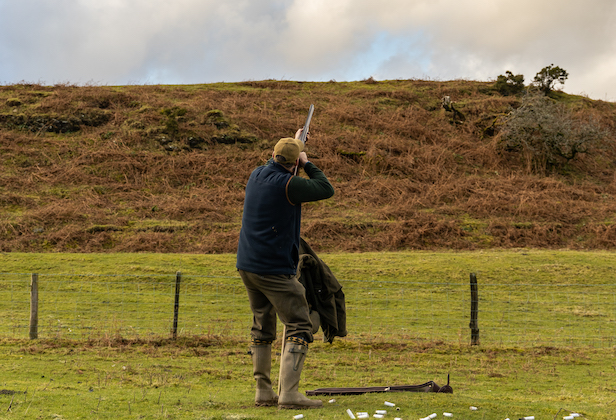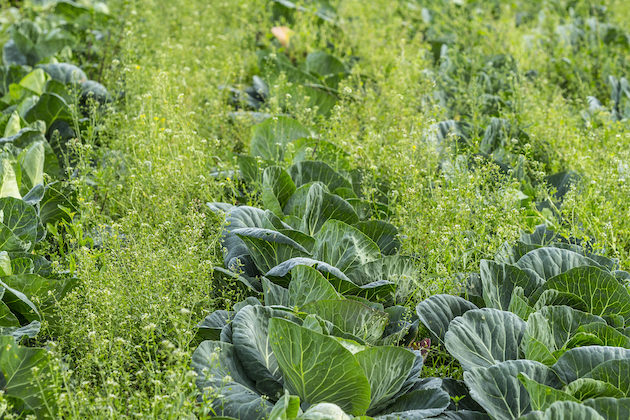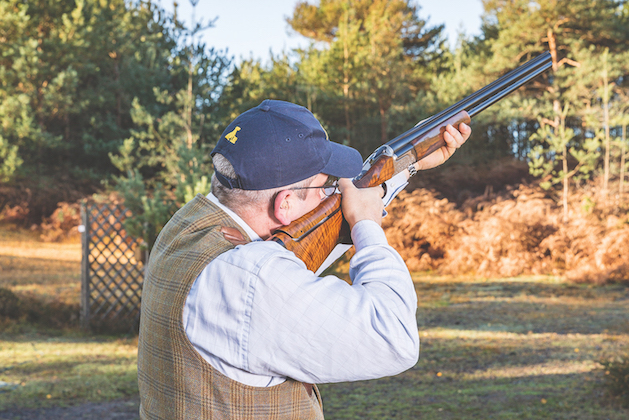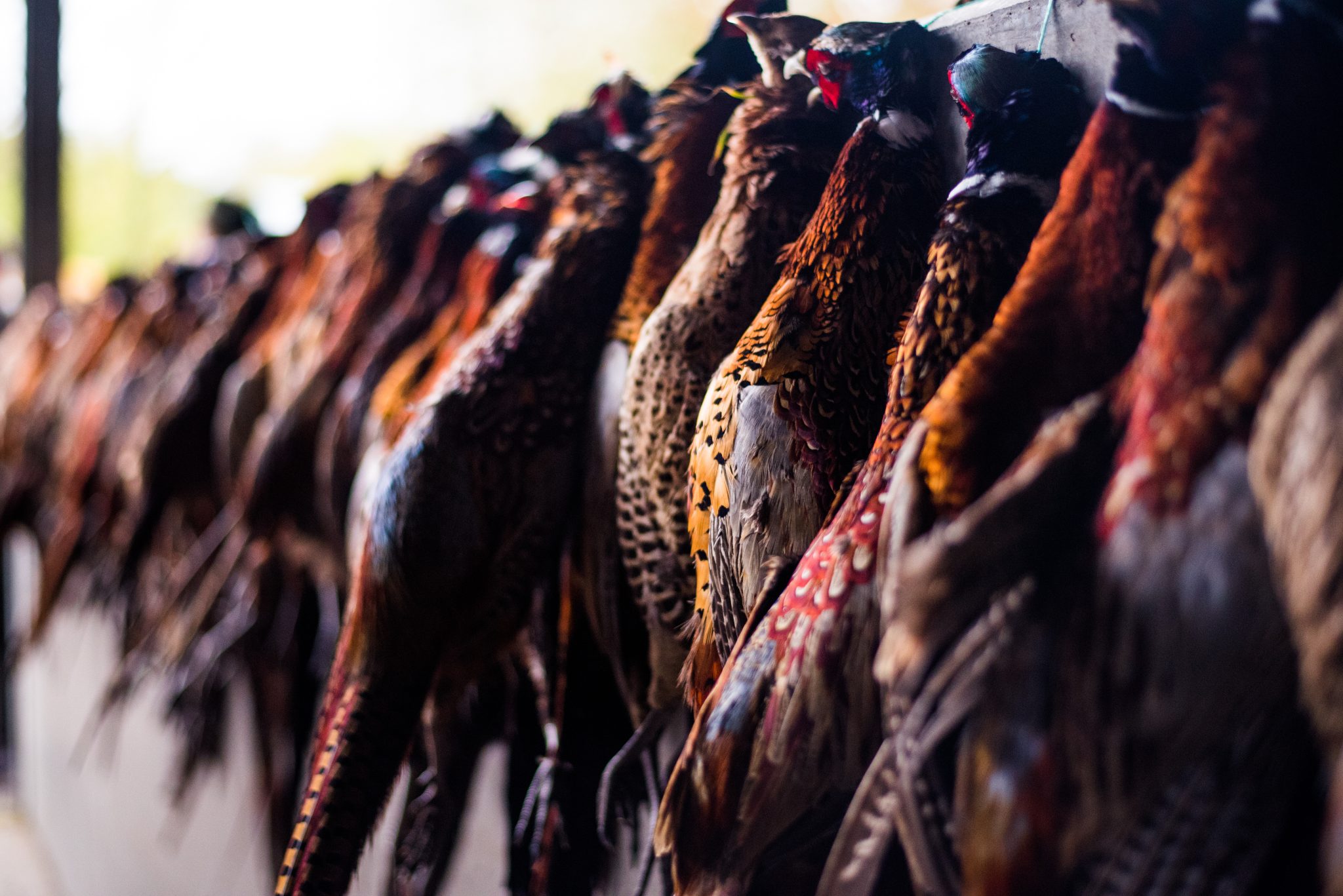Win CENS ProFlex DX5 earplugs worth £1,149 – enter here
Clayshooting at home: can I set up clay shooting on my own property?
Can you set up clay pigeon shooting on your own property?
 Rhys on the simulated partridge drive
Rhys on the simulated partridge drive
So here’s the situation. You live somewhere rural and you have a bit of land. You’ve been thinking that you’d like to do a spot of clayshooting at home and wonder how to go about it.

Never shoot over vegetable crops
Clayshooting at home – consider your neighbours
The first thing you need to think about when planning clayshooting at home is who your neighbours are. You might think that farmers would be unconcerned about you setting up a clay trap but bear in mind this comment a farmer gave us: “We generally don’t mind people shooting over our land as long as permission has been granted. On the other hand they are not allowed to shoot over vegetable crops because if shot is found in the head of a plant the supermarket will reject the entire field. Which costs us a lot of money.”
That certainly gives pause for though. You need to think carefully about the placement of the trap when shooting clay pigeons. (Read our list of the best clay traps here.) Do you really have enough land? You need to make sure that no shot and no broken clays will fall on anyone else’s land around you and remember that you are not allowed to shoot over a right of way.
Remember: it is illegal for pellets to cross over onto a neighbour’s land.
What’s a safe range for clay shooting?
The expected distance a shot can travel is 300 yards, but this depends on wind strength and direction, pellet size and whether it’s steel, bismuth, lead or Hevishot. For example, Hevishot fired downwind in a strong breeze could go more than 300 yards.
Noise and safety
Clayshooting at home is going to cause noise so you need to think about it and the effects it could have. If your neighbours are near enough to hear and be disturbed then they could complain to the council about noise pollution. Get them onside before you begin and remember hats, ear defenders and eye protection are a must when shooting clays. (Read our list of the best ear defenders here.)

Tony Bracci is an instructor at Bisley
Tips and advice
Tony Bracci, shooting instructor at Bisley Shooting Ground and Sporting Gun contributor advises on clayshooting at home:
- The safety zone of 300 yards away from buildings, footpaths and any boundary is a recognised parameter.
- If using a manual trap and trapper, agree a clear stop and start signal for shooting. The trapper should operate the trap from a safe location and have a flag or signalling device to signal a problem (so that they don’t walk into a potential danger zone.)
- You must have sufficient space so that no shot or clays pass over boundaries.
- Your first priority should always be safety procedures.
- Noise is a real issue, but good communication with those that could take offence can help to solve this. Let neighbours know when and for how long you will be doing shooting. Check in after you have shot and get some feedback.
- Communicate with everyone taking part so they know what is going on. For example, I will shoot ten straight driven targets then stop shooting, or I’ll call for each target then shout stop to let you know I’m done.
- Make sure no one can walk into the middle of your clay shoot and put themselves in danger, rope off access or put up signs with your phone number on.
Which type of clayshooting?
Are you wanting to practise for game shooting, Sporting clays or just some all-round fun? This will determine the different angles that you will need to replicate and in turn will help you make the right decision on which clay trap to buy.
- For replicating pheasants and partridges, a sloping bank to launch your clays from is ideal. This will allow you to practise the three main shots for driven game: the straight driven, a right-to-left crosser and a left-to-right crosser. When firing the clays from a bank, it is important to make sure that the clay will travel well beyond the position of where you intend to stand.
- For replicating grouse, you will need to be careful in the initial set-up. Because the clays are coming in lower it can be dangerous — broken pieces of clay can fight back and cause some serious harm. Remember to consider your shot fallout here; the more you can move around your trap the more angles you can replicate, from your going-away birds to your straight driven, your quartering-in and your crossers.
- For Sporting clays, it is best to wait until you can go to your local shooting ground to practise due to the volume of traps at their disposal, but there is nothing to stop you practising on a particular target that you have been struggling with.
This article was originally published in 2014 and has been updated.
Related Articles
Get the latest news delivered direct to your door
Subscribe to Shooting Times & Country
Discover the ultimate companion for field sports enthusiasts with Shooting Times & Country Magazine, the UK’s leading weekly publication that has been at the forefront of shooting culture since 1882. Subscribers gain access to expert tips, comprehensive gear reviews, seasonal advice and a vibrant community of like-minded shooters.
Save on shop price when you subscribe with weekly issues featuring in-depth articles on gundog training, exclusive member offers and access to the digital back issue library. A Shooting Times & Country subscription is more than a magazine, don’t just read about the countryside; immerse yourself in its most authoritative and engaging publication.







